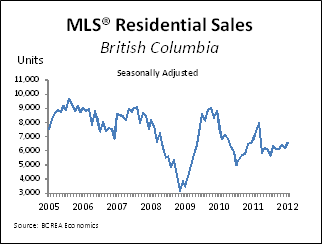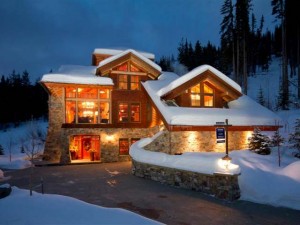This article appeared on the DigitalJournal.com on February 15th, 2012 (from Canada NewsWire).
OTTAWA, Feb. 15, 2012 /CNW/ – According to statistics released today by The Canadian Real Estate Association (CREA), national resale housing activity retreated in January 2012 from the strong finish reported for December 2011.
Highlights:
- Home sales were down 4.5% from December to January.
- Actual (not seasonally adjusted) activity came in 4.0% above levels in January 2011, and stood even with the 5 and 10 year averages for January sales.
- The number of newly listed homes edged down 1.4% from December to January.
- With sales down by more than new listings, the national market shifted further into balanced territory.
- The national average home price was up less than 2% year-over-year in January, ranking it among the smallest increases of the past year.
Sales activity recorded through the MLS® Systems of real estate Boards and Associations in Canada fell 4.5 per cent from December 2011 to January 2012. This marks the first monthly decline in national activity since August 2011 and the biggest monthly decline since July 2010. The monthly decline reversed a string of monthly increases over the closing months of last year, and returned national activity to where it stood at the end of the third quarter of 2011.
“The national housing market is stabilizing and remains well balanced,” said Gary Morse, CREA’s President. “That said, forecasts for economic and job growth going forward vary widely for different parts of the country, suggesting a possible continuation of a softening trend in some markets, as well as the potential that demand will pick up based on strong fundamentals in others. All real estate is local, so talk to your local REALTOR® to understand how price trends in your neighbourhood are shaping up.”
Activity was down in over half of all local markets in January from the previous month. Led by declines in Greater Toronto and Montréal, demand also softened in a number of other major urban centres including the Fraser Valley, Calgary, Edmonton, Winnipeg, Ottawa, and Greater Vancouver.
Actual (not seasonally adjusted) national sales activity was up four per cent from year-ago levels in January, the smallest year-over-year increase since last May. As was the case in a number of months last year, actual sales in January 2012 stood close to the five and ten year average for the month.
The number of newly listed homes edged down 1.4 per cent on a month-over-month basis in January following a 2.9 per cent increase in December. The monthly decline in new supply reflects a drop in new listings in a number of Canada’s largest urban centres, which offset a jump in new listings in Vancouver.
Sales fell in January shifting the national market back towards the mid-point of balanced territory and reversing the recent trend which had seen the market becoming tighter over the final four months of 2011. The national sales-to-new listings ratio, a measure of market balance, stood at 53.8 per cent in January, down from 55.5 per cent in December and 55.4 per cent in November.
Based on a sales-to-new listings ratio of between 40 to 60 per cent, 60 per cent of local markets were balanced in January. Compared to December, there were fewer buyers’ and sellers’ markets, and a greater number of balanced markets.
The number of months of inventory stood at six months at the end of January on a national basis, up from 5.7 months in December 2011 and returning it to where it stood in October 2011. The number of months of inventory represents the number of months it would take to sell current inventories at the current rate of sales activity, and is another measure of the balance between housing supply and demand.
The actual (not seasonally adjusted) national average price for homes sold in January 2012 was $348,178, representing an increase of 1.2 per cent from its year-ago level. This ranks among the smallest increases since late 2010.
On a seasonally adjusted basis, the national average home price rose 1.6 per cent on a month-over-month basis, marking a rebound from a decline of similar magnitude in December. This pattern mirrors the one playing out in the newly-launched MLS® Home Price Index (HPI), published on February 6.
“Year-over-year comparisons in the national average price are expected to become volatile and may turn negative, reflecting average price developments in the first half of 2011 in Vancouver,” said Gregory Klump, CREA’s Chief Economist. “At that time, high-end home sales in Vancouver’s priciest neighbourhoods surged to all-time record levels, which skewed the national average price upward considerably. A replay of this phenomenon is not expected this year. As a result, comparisons for national average price to year-ago levels over the coming months will reflect an upwardly skewed base effect. For this reason, year-over-year comparisons should be kept in perspective. Developments in the MLS® HPI will provide important guidance on price trends, since it is not affected by the problem of compositional shifts in the mix of sales activity.”
Link


 Home foreclosures are on the rise in B.C.’s Central Okanagan in recent months, but local real estate agents disagree about who might be losing their homes.
Home foreclosures are on the rise in B.C.’s Central Okanagan in recent months, but local real estate agents disagree about who might be losing their homes.